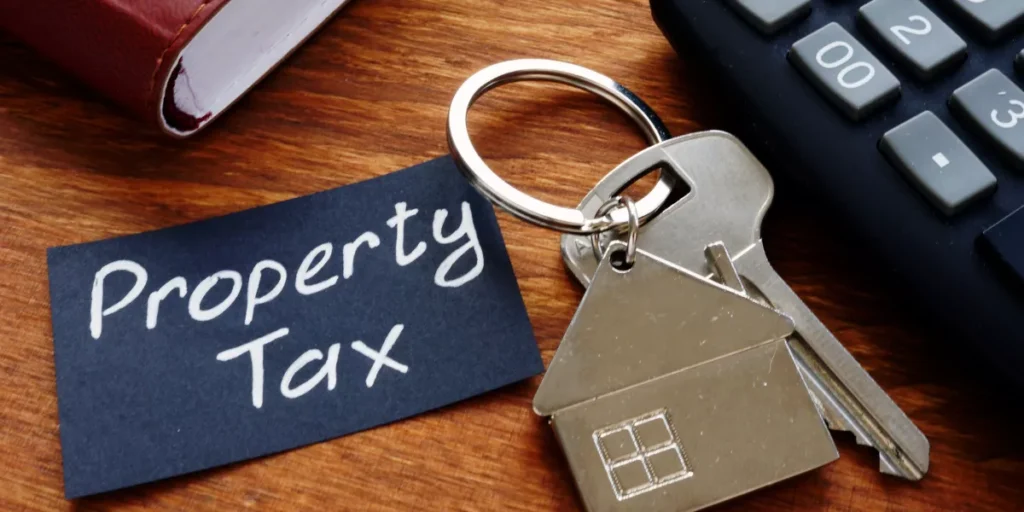For all first-time home buyers, investors, or long-term Texas property owners, you pay property taxes and it is important to assess your property for taxes. Property taxes can significantly impact your long-term financial planning and frequent budget. But, how is property assessed for taxes?
The process of real property valuation isn’t always clear, but we will break down the property tax assessment in Texas, factors influencing the assessed value of a taxpayer’s primary residence, the difference from market value, and things you can do if your home is over-assessed.
So, let’s begin the assessment journey.
Property Tax Assessment

It is a process of determining the value of your property taxation, and performed by your local appraisal district. This value decides the amount of tax due each year.
In Texas, CAD or County Appraisal District is responsible for determining the value of all your property within its jurisdiction.
Terms You Should Know
Property taxes are calculated based on the following:
- Market Value:The value a taxpayer property would sell for in an open, competitive market.
- Assessed Value: The assigned value of your property by the appraisal district, in this case, CAD.
- Taxable Value: The assessed value minus the exemptions, like the homestead.
Who Assesses Property for Taxes in Texas
In Texas, all of the 254 counties have their own Appraisal Districts governed by a board of directors. The CAD or county board is responsible for hiring professional assessors to value your property every year on January 1st.
The overall tax liability, tax-assessed values, and reassessments are overseen by the Texas Comptroller’s Office, which sets the standards but does not control local values or tax rates.
Appraisal District’s Role
Tax assessors determine the assessment ratio by following the steps below:
- Determine the fair market value of a property’s assessed value based on where the property is located.
- Apply any exemptions if applicable.
- Notify the homeowners of the assessed property value.
- Respond to all the appeals and protests.
Property Value Determination for Tax Purposes
In Texas, the assessor’s office determines homeowner’s property value based on the market value of each property in the competitive market. The appraisal district uses mass appraisal techniques to evaluate a pool of properties with the same characteristics.
Common Valuation Methods
Sales Comparison Approach
This method compares a property with similar homes sold in the area. It includes factors like location, size, age, conditions, and amenities.
Cost Approach
This method estimates the cost to replace the structure with similar ones, minus the depreciation cost.
Income Approach
This approach is primarily used for commercial properties and rentals, considering the income that the property could generate.
Most Texas homes use the sales comparison approach. That is the reason that the recent sales in your neighborhood and local real estate market can influence your tax bills heavily.
Factors Influencing Your Property’s Assessed Value
Several factors affect your property’s value and how your property is assessed by the appraisal district.
- Location: The property value depends on your neighborhood, the school districts, and the amenities in the proximity.
- Size:Square footage, number of bedrooms and bathrooms, and lot size of your house matter.
- Improvements: Adding pools, garages, or remodeled kitchens raises property value.
- Market Trends:A hot real estate market like Austin or Dallas can lead to higher assessments.
- Age and Condition:A new or well-maintained house gets you a higher appraisal for your home.
If you’re buying a home and want to assess its taxes or professional guidance, Nitin Kumar is your go-to Realtor with all market information and guidance on property values and assessments.
How Often is a Property Assessed in Texas?
A property’s assessment is conducted every three years by appraisal districts required by Texas law. However, many do annually in high-growth counties. It is because your property value can increase significantly in a year, even if you haven’t made any changes to your home, you will have to pay your property tax assigned to the county treasurer.
Property Tax Calculation in Texas

Once your property value is determined, the taxing units, like the city, county, or school district, levy local tax rates to calculate the total property tax bill of your home.
Calculating Property Taxes
Here, we will answer “how is property assessed for taxes” with calculations. Property taxes are calculated by multiplying the taxable value by the tax rate:
Taxable Value x Tax Rate = Annual Property Tax.
For example, a property of worth $350k, with a homestead exemption of $40k, has a total taxable value of $310K ($350k – $40k). If the combined tax rate is 2.2%, the property tax you owe is $6,820 ($310k x 2.2%).
Exemptions That Reduce Tax Burden
The law of Texas offers several property tax relief measure that help lower tax on your property. The most common is Homestead Exemption, reducing the taxable value of at least $40k and caps annual assessment increases at 10%. Others include:
- Over 65 Exemption.
- Disabled Person Exemption.
- Veteran Exemption.
If you fall under any of the mentioned exemptions, you can apply through your county appraisal district website for lower assessed values.
But what tax benefits do you get if you have a commercial or an investment property? Find out here.
What if You Think Your Assessment is Too High?
If you think your real estate tax assessment is too high, you have the right to protest it each year before the deadline for paying taxes. You can protest the appraised value by following the steps below:
- Review:Review your notice period of appraisal value that is mailed to you typically in April or May.
- Evidence:Gather pieces of evidence like comps, pictures, and contractor estimates.
- File a Protest:Online or by mail, you can file to protest the tax levied. Check your CAD for confirmation.
- Formal Meeting: Attend an informal meeting or a formal appraisal review board ARB hearing.
It is a common thing to file a protest against real property taxes in Texas, especially if homeowners see a large increase in their personal property tax liability. You can also hire a tax consultant to handle your protest with a contingency fee.
Can Renovations Affect Property Tax
Yes, renovations and home improvements do increase the assessed value of your residential property. While adding a bathroom, building a deck, or remodeling your kitchen, expect an appraisal district adjustment to your valuation. However, normal maintenance like painting, fixing basic plumbing issues, or roofs does not generally impact your tax assessment.
Why Property Taxes in Texas Feel High
Normally, both state and local taxes are levied on state residents. However, as a Texan, you may have noticed that Texas doesn’t have a state income tax; that is why property taxes on all types of properties are a major source of revenue for the local Texas government. The state does not set the rates, but the school districts, counties, and cities are responsible for applying tax rates in any Texas region.
That is the reason that Texas has one of the highest property taxes in the U.S, with an average rate of 1.6% to 2.5% depending on the county you live in.
Conclusion
The question of “how is property assessed for taxes” might seem complicated, but as a Texan and a homeowner, you have the right tools and rights available to stay informed and challenge your evaluation if required. When you understand how your property is assessed for taxes, you will be able to:
- Budget more efficiently.
- Can apply for all eligible property tax exemptions you qualify for in your county.
- Avoid overpaying taxes for your Texas property.
The only rule is to be proactive and review your annual assessments yourself, apply exemptions, and protest your assessment if you think that your home value doesn’t reflect the reality of the property tax assessment.
For more information regarding your property and consultation, contact us. We provide custom suggestions and give you the best value for your time and property value that you can get.
Frequently Asked Questions
Q. How to get the assessed value of a property?
A: Your County Appraisal District website helps you find the assessed value of your property. Texas CADs like Harris County Appraisal District offer an online property search tool. You can simply enter your property address and account number to asses the current assessed value, past value and other exemption details.
Q. How do they assess property taxes in Texas?
A: In Texas, property taxes are assessed based on the market value of your property as of January 1st. Your local CAD uses mass appraisal techniques to analyze sales of recent similar properties, adjusting for location, size, improvements, and home conditions. Your assessed value can be reduced by any exemption you may qualify for.
Q. What is the difference between just value and assessed value?
A: Value, or just value, is the market value of your property, the estimated price of your home that it can sell for in the local competitive market. The local government uses assessed value to calculate your property tax. Exemptions or legal caps can reduce the assessed value below the market value.
Q. How accurate are property tax assessments?
A: Property Tax Assessments are based on board valuation models. They might not always reflect the updates or unique conditions of your home. However, appraisal districts strive for accuracy, where there is a chance of an error or overestimation in the fast-changing Texas market. If you believe your assessed value is too high, file a protest with your CAD and provide evidence to support your claim.






